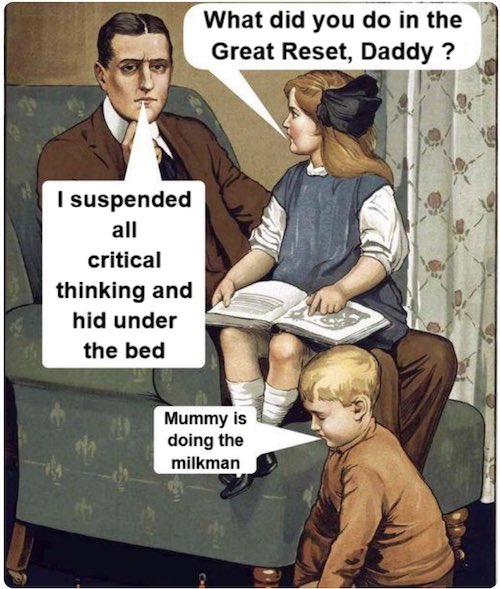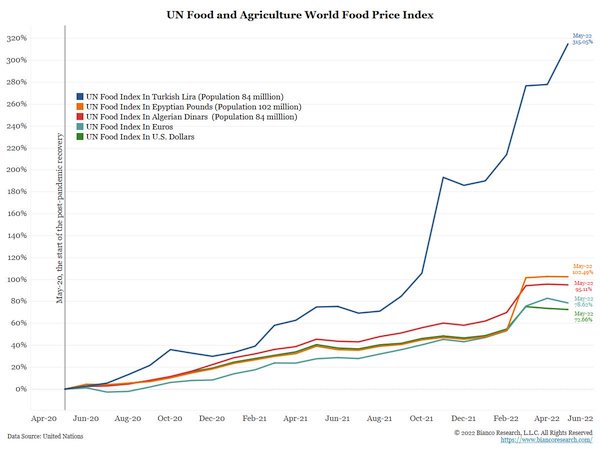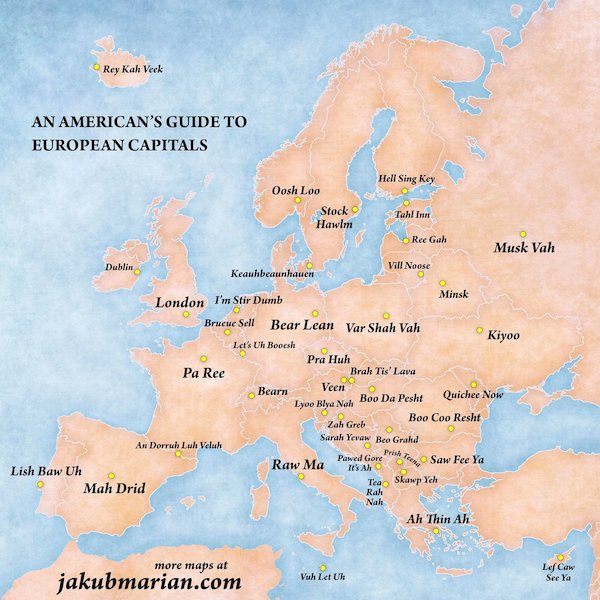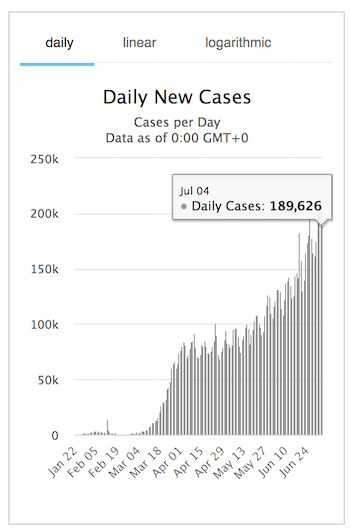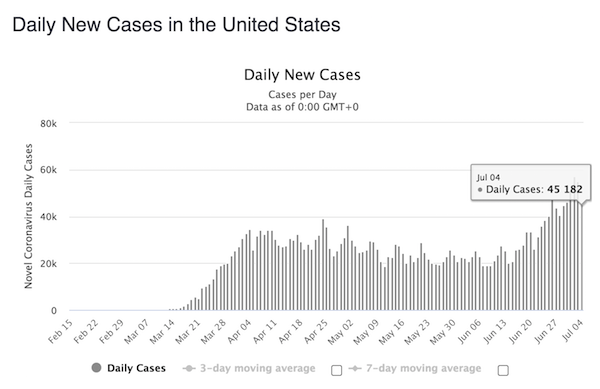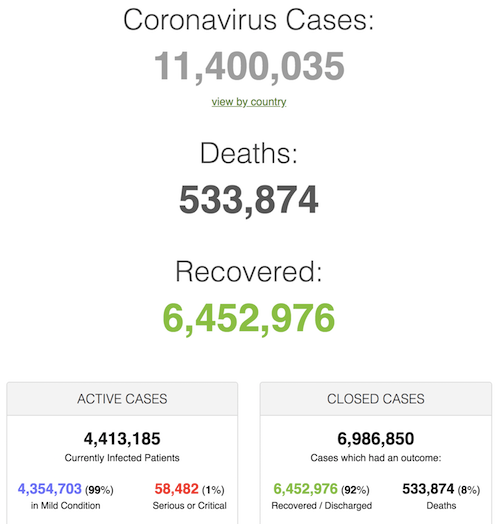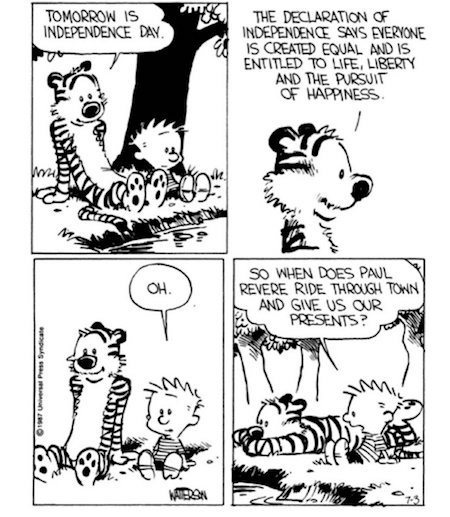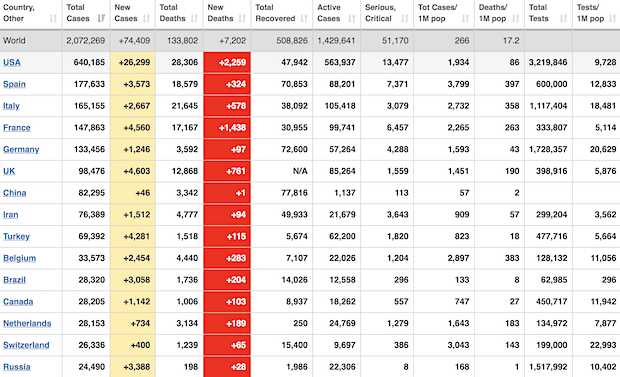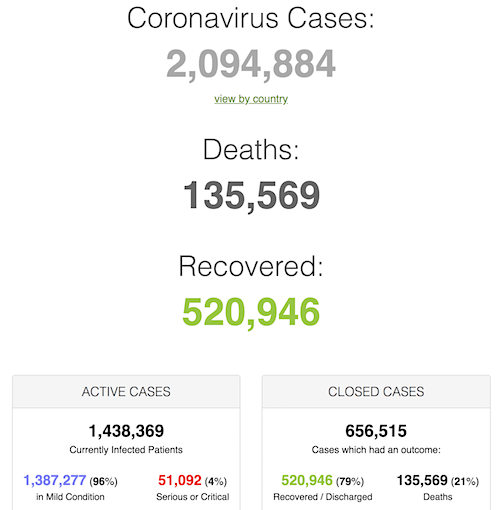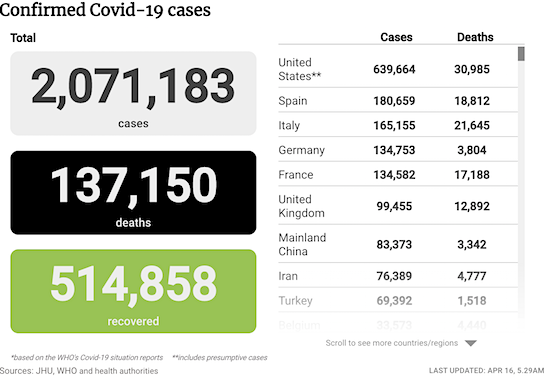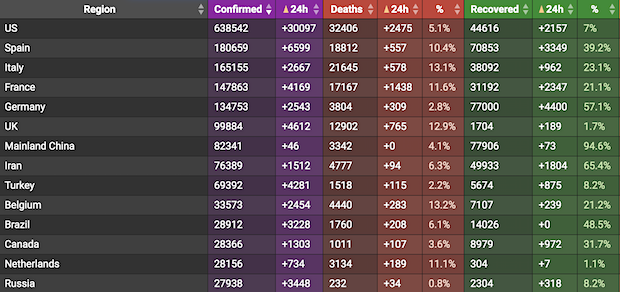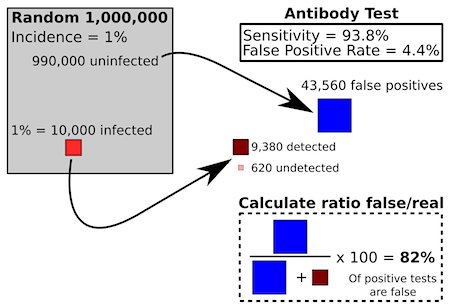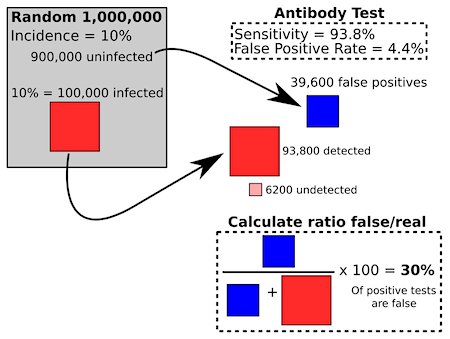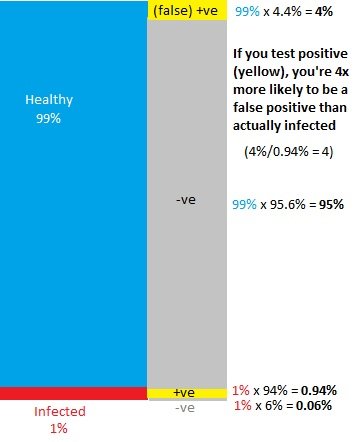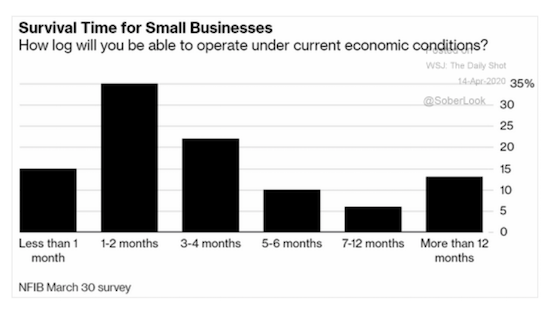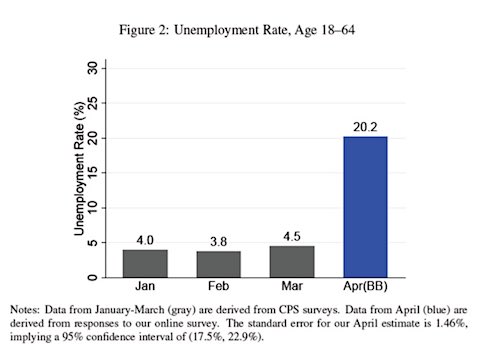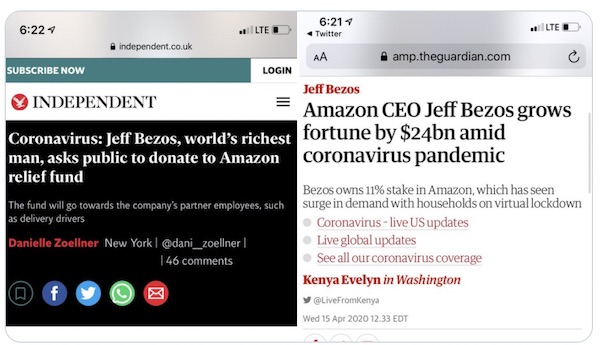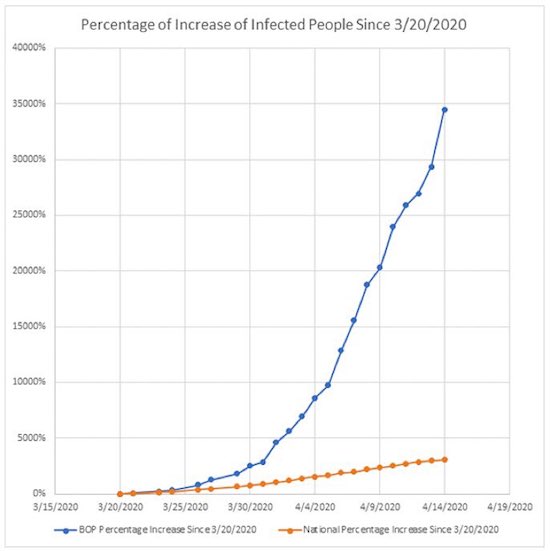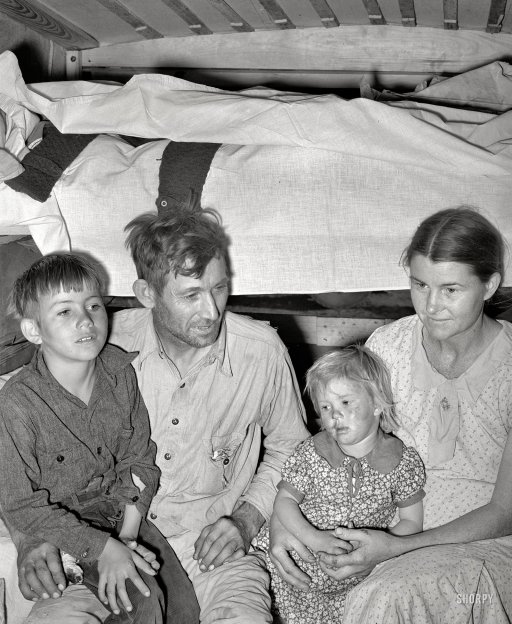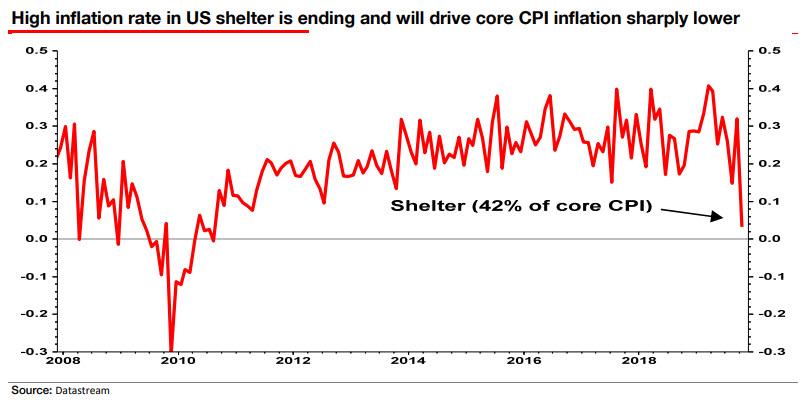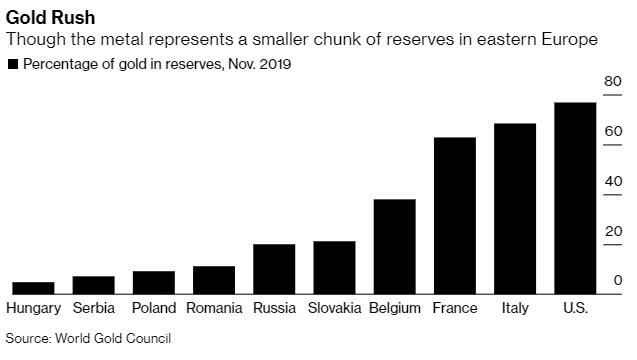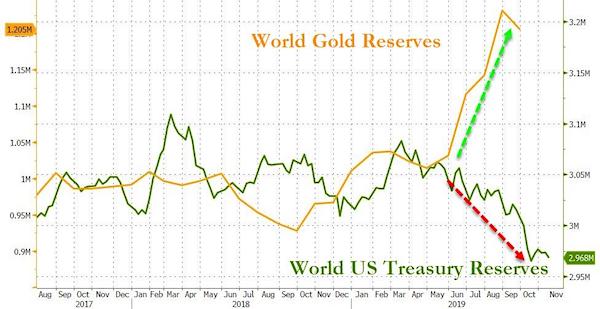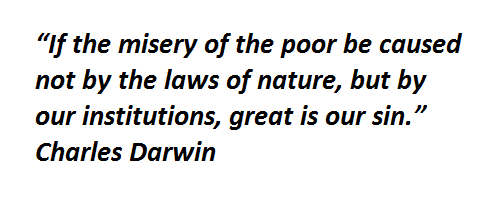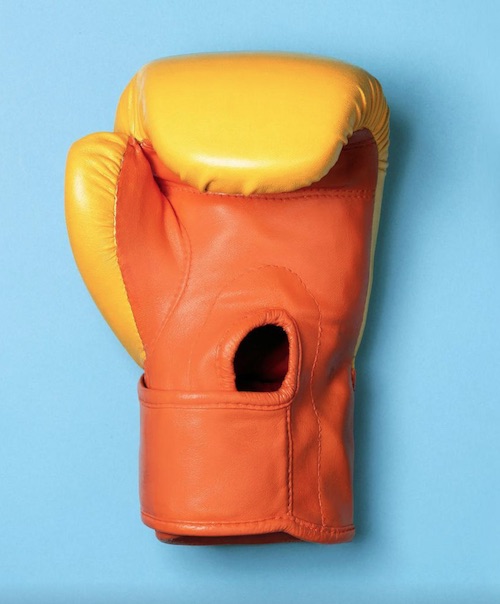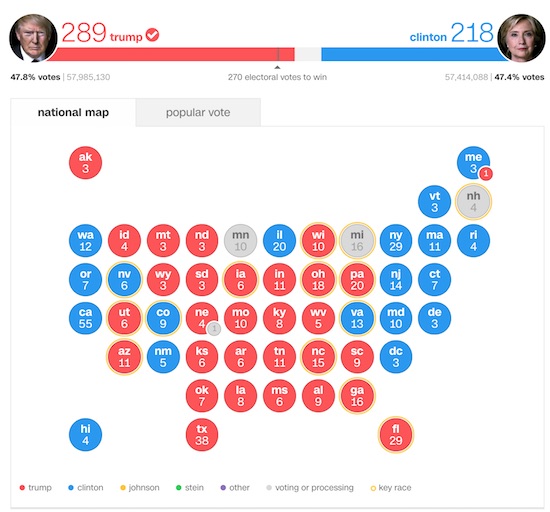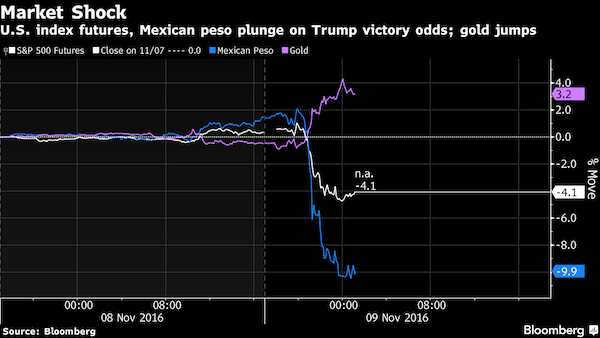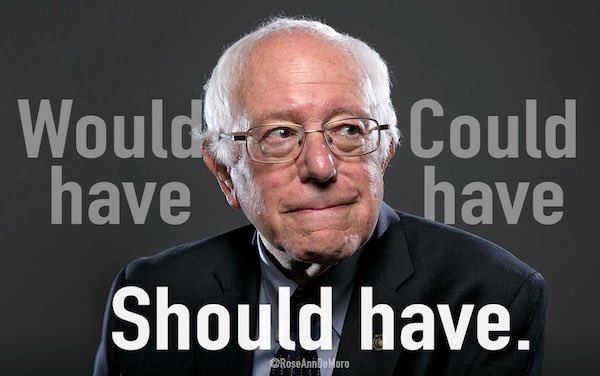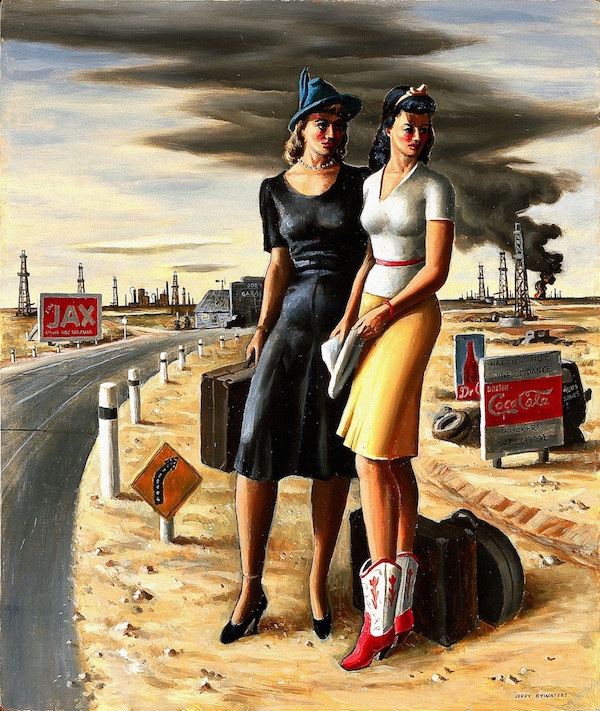
Jerry Bywaters Oil Field Girls 1940



Bannon
Bannon: We’re gonna march or die. This revolution isn’t turning back or caving. We won’t give up on Gaetz, Gabbard, Hegseth, or RFK. If President-elect Trump wants them, he’ll get them. We’ll move heaven and earth to make it happen. The WarRoom Posse is reporting for duty. pic.twitter.com/0L2tmsxC7H
— Bannon’s WarRoom (@Bannons_WarRoom) November 15, 2024
Rogan
https://twitter.com/i/status/1857512537752785156
https://twitter.com/i/status/1857708065191338428
Leavitt
President Trump just announced that Karoline Leavitt will be the White House Press Secretary. She's a total firebrand.
The fake news is going to lose their minds when she takes over that podium. pic.twitter.com/kWUZUpIJo7
— George (@BehizyTweets) November 15, 2024
Mollie
https://twitter.com/i/status/1857599848062628084
FBI J6
https://twitter.com/i/status/1857494322624737729
Alina
https://twitter.com/i/status/1857500858746835041
Jail
The left hate Trump's honesty. pic.twitter.com/wMxhe7OM9D
— Defiant World (@DefiantWorld) November 16, 2024
Trover
“If they release this report or leak this report out there, Ethics might as well just close up shop beause they would be violating their own protocols.
Let‘s remember, this was created by Nancy Pelosi, and has been a witch hunt machine for members of both parties.” pic.twitter.com/dOVT6n5mQy
— Joel Valdez (@realJoelValdez) November 15, 2024


“We are barely ten days into the realization of what just transpired and the entire lay of the land seems different, like a tectonic shift in politics, culture, mood, and possibilities..”
• The Revolution of 2024 (Jeffrey A. Tucker)
People are out and about, smiling at each other. It’s been true since the morning after the election, the results of which defied every prediction. Who doesn’t like to see the smug elites who have ruled the world for five awful years taken down a peg? More than that, there are hints of a return to sanity. Mainstream advertisers are suddenly returning to X, putting their economic interest above their tribalist loyalties. The editor of pro-lockdowns Scientific American, which had long blessed totalitarian measures as true science, has resigned. The attempt to pillage InfoWars and give it to The Onion has been reversed by a federal judge. That might be a fluke or might not be: maybe the lawfare is dialing back too. The cabinet of the incoming administration is being filled by voices that were fully censored for years. Employees are reportedly packing their bags at the FDA and other agencies.
Mainstream news commentators are sputtering around with less bravado than they have shown in years. CNN is firing major personalities. Trump is talking about abolishing the income tax and granting $10K in tax credits per homeschooled child, not to mention blowing up college accreditation systems, among other sweeping changes. The American Bastille day is coming, not only freeing the political prisoners of January 6 but also many of the unjustly persecuted including Ross Ulbricht, Roger Ver, and Ian Freeman, among so many others. That will be a day of rejoicing. Oh, and peace seems to have broken out in some contentious areas of the world, for now. What is happening? This is not the usual transfer of the resident of the White House. This is starting to look like an actual transfer of power, not just from Biden to Trump but from the permanent government – ensconced in many sectors – that has been long in hiding to an entirely new form of government responsive to actual voters.
As it turns out, there was no late surge for Kamala Harris. All the polls were wrong, and the rest was media blather. What was correct were the betting odds on Polymarket, and only days later, the FBI raided the 26-year-old founder’s home and confiscated his phone and laptop. There are still many millions of missing voters, people who supposedly showed up for Biden in 2020 but stayed home this time. Meanwhile, there has been a historic shift in all races, ethnicities, and regions, with even the possibility of flipping California from blue to red in the future. After decades of academic slicing and dicing of the population according to ever more eccentric identity buckets involving race, ethnicity, gender, and sexual interest, along with countless thousands of studies documenting deep complexity over intersectionality, the driving force of the election was simple: class, and the few intellectuals and some wealthy entrepreneurs who understand that.
The division was not really left vs right. It was workers vs laptoppers, wage earners vs six-figure stay-at-homers, bottom half vs top 5 percent, people with actual skills vs weaponized resume wielders, and those with affection for old-world values vs those whose educations have beaten it out of them for purposes of career advancement. The silent majority has never been so suddenly loud. It just so happened that the heavily privileged had come to inhabit easily identifiable sectors of American society and, in the end, had no choice but hitch the whole of the overclass wagon to the fortunes of a candidate like themselves (Kamala) but who was unable to pull off a compelling masquerade. Not even a parade of well-paid celebrity endorsements could save her from total rebuke at the polls. Sylvester Stallone called Trump a second George Washington but another reference point might be Andrew Jackson.
The overwhelming victory for Trump is on a scale not seen since 1828 when, four years after the presidency was stolen from Jackson, Old Hickory came back in a wild landslide and cleaned up Washington. Trump arrives in Washington with a mandate for the same, with 81% of the public demanding that the government shrink in size and power. It has all happened so quickly. We are barely ten days into the realization of what just transpired and the entire lay of the land seems different, like a tectonic shift in politics, culture, mood, and possibilities. We are even seeing blunt and open talk about the horrendous Covid response that so utterly demoralized the country and the world, after years of silence on the topic. We have promised hearings coming, and court cases galore now on fast track. The sudden coming together of three great sectors of anti-establishment fury – MAGA, MAHA, and DOGE – in the last two months of the election of 2024 is one for the ages.
It provides the beginnings of an answer to the great question on our minds for decades: how precisely does an authentic revolution take root in an industrialized Western democracy? Are elections capable of delivering real results? For now, the answer seems to be yes. That should thrill any responsible observer of social, cultural, economic, and political affairs. It means that the early architects of the American system were not wrong. The intolerable costs of political upheaval of ages past can be mitigated by planting power firmly in the hands of the people through the plebiscite. This was their view and their gamble. All the evidence of our time points to the wisdom of the idea. In the darkest days of the last year of the first Trump presidency, the bureaucracy was riding high, in full revenge mode against an elected government it hated and sought to overthrow. The agencies were passing strange edicts that felt like laws but no one knew for sure. You are essential, you are not. You must stay home, unless you have an emergency. Your elective surgery needs to wait. The kids cannot go to school. That European vacation cannot happen.
You can eat at a restaurant but only if you are six feet away from other patrons and you must put this China-made cloth on your mouth if you get up to go to the restroom. The flurry of edicts was mind-boggling. It felt like martial law, because it was some form of exactly that. The best research points to the astonishing reality that this was never really a public-health response but a scheme by security and intelligence sectors to enact some kind of global color revolution, which is why the policies were so similar the world over. It was indeed an awesome display of power, one that invaded all our communities, homes, and families. No one knows this better than Team Trump, even if there has been near silence on the topic for all these years. They have had time to put the pieces together and figure out what happened and why. And they carefully, and in seclusion worthy of a Cistercian monastery, plotted their return, leaving nothing to chance.

“The departments and agencies that have been weaponized will be completely overhauled.”
• Trump Will Bring Justice, Not Revenge (Jim Rickards)
The persecution and prosecution of President Donald Trump is finally winding down. Jack Smith, a primary player in the lawfare campaign against Trump, has filed to dismiss the case involving classified documents at Mar-a-Lago. Rep. Jim Jordan has instructed Special Counsel Smith to preserve all records related to the cases. The Deep State tried everything to make Trump lose. In total, 91 frivolous felony charges were thrown at the former president. All so they could brand him a felon, tie up resources and prevent him from campaigning. Then there was the January 6th “insurrection”, multiple Russian collusion hoaxes and countless media lies. The Deep State even prosecuted his advisers, such as 75-year-old famed economist Peter Navarro, who was the first former White House official ever imprisoned on a contempt-of-court charge. This dignified gentleman was frog-marched into prison as part of a political persecution campaign.
The entire affair was a disgrace to the nation. On Election Day, Americans rejected this vile lawfare. And soon, it will be time for justice. With GOP control over both sides of the Congress and a near-landslide win, Trump has a mandate from the American people to pursue it aggressively. President Trump has not been shy about his intentions, stating, “The departments and agencies that have been weaponized will be completely overhauled.” On day one, he promised to reissue his executive order allowing the President to remove “rogue bureaucrats” from their positions. Trump promised to “wield that power very aggressively” against the Deep State. Our once and future President even promised to establish a “Truth and Reconciliation Commission”, opening the books on issues including the JFK assassination, illicit spying, and government corruption. I can’t wait to see what it uncovers. Trump’s recent speech was packed full of details on how he plans to drain the swamp. He starts strong and keeps going:
“This is how I will shatter the Deep State and restore government that is controlled by the people and for the people… Make every Inspector General’s office independent and physically separated from the departments they oversee so they do not become the protectors of the Deep State… Launch a major crackdown on government leakers who collude with the fake news to deliberately create false narratives and to subvert our government and our democracy… Clean out all of the corrupt actors in our national security and intelligence apparatus… Push a constitutional amendment to oppose term limits on members of Congress. “Shatter the Deep State”. No ambiguity there.
Some will call what is coming revenge. But this will not be revenge. It will be justice. The distinction is important. I would fully support justice here if the shoe was on the other foot, and the GOP were the offending party. This type of behavior simply cannot stand. It undermines and corrupts the entire system. Re-establishing a just and fair government is critical. It will be difficult, but I believe Trump will succeed this time. He has learned from the mistakes of his first term. Trump has the right people around today. He has already rejected the idea of inviting Nikki Haley or Mike Pompeo to join the new administration.
This is an excellent sign of things to come. Given the mandate, the appointment of Attorney General will be particularly important. I have my eye on Mike Davis. He is the exact type of person this position calls for. Tough as nails, fair, and dedicated to cleaning up the system. I’ve met the man, and he’s just the type of person required for this job. The stage is set for a historic draining of the swamp. Of course, there is still the potential for last-minute desperation moves by the Democrats, including their plan to disqualify Trump using the “insurrection clause”. But given my prediction that Congress will be controlled by Republicans, I think we’ll be in the clear in that department.

“..in The Atlantic, an establishment mouthpiece, Gabbard was denounced as a “threat to the security of the United States.” That’s a staggering charge to levy on the person who is going to be head of national security..”
• Tulsi Gabbard, The New US Intel Chief (SCF)
The nomination of Tulsi Gabbard as the United States intelligence supremo has sent shockwaves through the American and NATO establishments. The Western news media – always a dutiful echo chamber for deep-state policymakers – is reverberating with horror at her nomination by President-elect Donald Trump. That reaction is a good sign that something significant has happened. The potential appointment of Gabbard as Director of National Intelligence (DNI) could be the most consequential decision yet by Trump in forming his cabinet. If one move could signal the foreign policy direction under the 47th president, Gabbard’s nomination is the most salient and potentially the most constructive on the key issue of world peace. Time magazine headlined with the U.S. intelligence community’s response to Gabbard’s selection. “We are reeling,” it was reported. Reuters reported that the Western “spy world is vexed.” Meanwhile, in The Atlantic, an establishment mouthpiece, Gabbard was denounced as a “threat to the security of the United States.”
That’s a staggering charge to levy on the person who is going to be head of national security. It is almost hilarious to see the apoplectic reaction in the U.S. establishment and its servile mainstream media. CNN’s news anchor Jim Sciutto was distraught in sharing his concerns with colleague Richard Quest, remarking that Gabbard’s views “contradict” almost everything about U.S. foreign policies. If we may paraphrase that exchange, the sentiments were: Oh my God, how terrible! Whatever shall we say now about all the lies we have been spinning for years and getting fat salaries for? After all, as far as the U.S. corporate media are concerned, especially those channels and newspapers associated with the Democrats, the establishment, and the deep state intelligence apparatus, Tulsi Gabbard has been smeared as a “Russian asset.” It is indeed profoundly challenging – one might even say, earth-shattering – to the deep state if Gabbard becomes Director of National Intelligence.
As with Trump’s other cabinet picks, the nominations will have to be approved by Senate panels. So there is a while to go before her post is confirmed. A lot can change or be derailed. Trump’s cabinet picks this week have been keenly watched by observers trying to discern the future foreign policies of the next presidency, which begins in January after his inauguration. Trump’s early call-ups this week of hawkish figures Pete Hegseth for defense and Marco Rubio for secretary of state caused dismay among some critics of U.S. foreign policy who wanted a fundamental break from warmongering and hostility toward Russia, China, and Iran, among others. Then came Trump’s selection of Tulsi Gabbard. The former Congresswoman has gained wide popular American and international respect for her outspoken and independent criticism of U.S. militarism in the Middle East and Ukraine.
However, the U.S. political establishment and media have slandered her as a “traitor” and a “Russian asset” for her views criticizing Washington’s regime change wars in Syria and the Middle East. In 2017, Gabbard traveled to Syria and met with President Bashar al-Assad. She spoke out against Washington’s covert policy of sponsoring terrorist militia for regime change in Damascus. For telling the truth, she was vilified as an “apologist” for Assad. More recently, the “apologist” slur was thrown at her again after Gabbard opposed the U.S. and NATO’s arming of the Kiev regime and the proxy war against Russia. She said that the conflict in Ukraine could have been avoided if Russia’s security concerns about NATO’s threatening expansion had been taken into consideration. How refreshing to hear that sanity and objectivity.
In a twisted way, the CNN clapping seals are correct. Her views on the conflict in Ukraine do indeed contradict the U.S. establishment and media’s propaganda about “Russian aggression.” Her views unequivocally debunk the wall-to-wall “news” propaganda as false and serve as a warning to the public that NATO’s lies are dragging the world into a nuclear war. The role of Tulsi Gabbard in the second Trump administration – if she makes it through Senate vetting – cannot be overstated. In her DNI capacity, she is the intel supremo who oversees the CIA and NSA. Through her daily briefings to the president, Gabbard will play a crucial role in President Trump’s foreign policymaking. Given Trump’s freewheeling style, it can be fairly assumed that Gabbard’s input into policymaking will have much greater influence than the secretaries of defense or state. She will call the shots, and Trump will designate Hegseth, Rubio, and others to follow suit on the policies.
Wasserman
Rep. Debbie Wasserman Schultz says that Tulsi Gabbard is a "Russian asset."
You simply should not be allowed to defame somebody like this on cable TV without consequences. pic.twitter.com/fduHdchEnr
— Greg Price (@greg_price11) November 15, 2024

“..the secretary of State, Defense, Treasury or Interior is a very important position. But measurable progress can often be incremental. But imagine being the “Secretary of Saving Human Lives.”
• RFK Jr. Is Poised To Save The Health And Lives Of Millions Of Americans (Hill)
What is the value of someone who has the potential to literally save millions of lives and improve the health of tens of millions of children and adults? We may be on the verge of revolutionizing America’s failing health care system for the better, and two men will be responsible: President-elect Donald Trump and Robert F. Kennedy Jr. Trump has long been a fan of Kennedy’s intellect, independence from special interests, passion, empathy and connection with the American people. Trump also no doubt realizes that Kennedy’s value to his incoming administration is immeasurable, as RFK Jr. can wear multiple hats of expertise. Trump has picked him to run the Department of Health and Human Services. And it is from under that HHS hat that Kennedy will transform our “sick-care” industry and literally save millions of lives in the process.
Anyone paying attention to the utter catastrophe that has become America’s “health care” industry knows that this is not political hyperbole or an exaggeration. It is an outright obscenity that we are losing so many Americans to entirely preventable causes. Three days before the election, I wrote about “The 2 decisions that crushed Harris’s momentum.” One was Harris’s selection of Gov. Tim Walz as her running mate. The other, and more important of the two, was Kennedy suspending his campaign and endorsing Trump. “One of the main reasons is the ‘mom vote,’” I wrote. “Kennedy’s endorsement will potentially bring millions of previously ambivalent female voters to the table for Trump. Why? Because they are moms who are worried about the health and wellbeing of their children and have long believed that Kennedy was one of the few people in public life who would protect those children. This is a much bigger deal than the media realizes or will acknowledge. It is a real game changer. Toward that end, these moms want Trump to win so he will bring Kennedy into his cabinet.”
After the column ran, I heard from many mothers confirming that exact point. Said one: “Yep, as one of those ‘mom votes’ who was dying to vote for Robert F. Kennedy Jr. I will now vote for the unity party.” After Kennedy got out of the race and Trump welcomed him with open arms, the two created what future historians may record as the most important health care movement in the history of our nation. It is a grassroots phenomenon spreading like wildfire as more and more parents and adults wake up to the chemicals and poisons being introduced into their bodies against their will. On Nov. 6, Kennedy posted: “President Trump has asked me to do three things: 1. Clean up the corruption in our government health agencies. 2. Return those agencies to their rich tradition of gold-standard, evidence-based science. 3. Make America Healthy Again by ending the chronic disease epidemic.”
In the speech announcing the suspension of his campaign and his unequivocal endorsement of Trump, Kennedy ticked off some truly horrifying statistics. “We spend more on health care than any country on Earth,” he said. “Nobody has a chronic disease burden like we have … Two-thirds of American adults and children suffer from chronic health issues. Fifty years ago, that number was less than 1 percent. So, we’ve gone from 1 percent to 66 percent. In America, 74 percent of Americans are now overweight or obese, and 50 percent of our children… Half of Americans have pre-diabetes or type two diabetes…And this is a crisis that 77 percent of our kids are too disabled to serve in the United States military. What is happening to our country and why isn’t this in the headlines every single day?…
“Cancer rates are skyrocketing in the young and the old. Young adult cancers are up 79 percent … So, what’s causing this suffering? I’ll name two culprits. First and the worst is ultra-processed food. About 70 percent of American children’s diet is ultra-processed. That means industrial manufactured in a factory … The second culprit is toxic chemicals in our food and our medicine, in our environment … The assault on our children’s cells and hormones is unrelenting.” Unfortunately, what is also “unrelenting” is the opposition to Kennedy from Big Pharma, Big Agriculture and special interests that realize hundreds of billions in profits at the direct expense of the health of every man, woman and child in America. In opposing that massive force, Kennedy is in the fight for our lives.
To be sure, being the secretary of State, Defense, Treasury or Interior is a very important position. But measurable progress can often be incremental. But imagine being the “Secretary of Saving Human Lives.” If Kennedy is even halfway successful in his quest to save the American people — and especially our children — from the life-robbing threats of ultra-processed foods and toxic chemicals, he can potentially save or improve tens of millions of lives over the next four years. That “cure” that will transcend every demographic and income level. Under the direction of Trump, Kennedy may turn ignorance to acceptance, acceptance to hope, hope to belief and belief to results. Again, what is the value of someone who literally has the potential to save millions of lives and improve the health of tens of millions of children and adults? I suspect we are about to find out.
RFK
RFK Jr. proceeds to drop bombshell about the giant bonus your pediatrician is vying for if she can just convince you to give your kid all the vaccines. Did your pediatrician read the studies? Does she know the risks? She means to, but she’s busy! Oh your kid developed a list of… pic.twitter.com/NyTdwjEvFS
— Ivory Hecker (@IvoryHecker) November 15, 2024
Dr. Oz
Dr. Oz reacts to RFK, Jr’s Health and Human Services nomination
" The current health care system in this country is unsustainable. And the experts who brought us these problems are the ones who are complaining about the proposed appointment of R.F.K. Jr. And it's frustrating… pic.twitter.com/XzAu6PrrXw
— Camus (@newstart_2024) November 15, 2024

“If we can come up with a plan that’s going to cost our people, our population, less money, and provide better health care than Obamacare, then I would absolutely do it.”
• What Could Trump 2.0 Mean for US Healthcare? (Sp.)
US President-elect Donald Trump has tapped Robert F. Kennedy Jr. to be his Department of Health and Human Services Secretary tasked with fixing America’s raging health crisis. Donald Trump has promised to “bring down costs” and increase the quality of US healthcare. What changes can be expected?
• During his first term, Trump tried but failed to repeal the Affordable Care Act (ACA), aka Obamacare. Trump called Obamacare “lousy health care” and floated replacing it, saying, “If we can come up with a plan that’s going to cost our people, our population, less money, and provide better health care than Obamacare, then I would absolutely do it.”
• Trump has vowed to protect Medicare, the federal health insurance program for people aged 65 or older and younger people with disabilities.
• Cuts to Medicaid, the largest government health-insurance program that covers low-income Americans, may be expected under Trump.
• During his first term, Trump proposed cutting the federal Supplemental Nutrition Assistance Program (SNAP) and eliminating the Medicaid expansion that was passed as part of the ACA.
• A work requirement might be added for some able-bodied adult beneficiaries, with federal spending on the program capped.
• Trump has promised to veto a federal abortion ban “under any circumstances”, saying, “It is up to the states to decide.”
• Trump didn’t rule out banning certain vaccines, promising to “make a decision” after Robert F. Kennedy Jr. – now tapped to be his HHS chief – hinted at the possibility of ending vaccine mandates. With an estimated 108,000 people dying from drug overdoses in the US last year, Trump blamed it on the migrant crisis. Although he criminalized all fentanyl-related substances in 2018, overdose deaths continued to soar.

“..there is work to be done as a nation committed to the rule of law. We cannot win at any cost when that cost is the very thing that defines us.”
• Why Voters Trusted The GOP More On Democracy (Turley)
“People violate laws any time they want.” Those words, shrugging off an alleged unlawful move last week, did not come from some Chicago gangbanger or Washington car thief. Those words of wisdom came from Democrat Commissioner Diane Marseglia in Bucks County, Pennsylvania. They came in response to the fact that the Democratic majority on the election commission had decided to ignore a binding state Supreme Court ruling in an attempt to engineer the election of Democratic incumbent Sen. Bob Casey (D-Pa.). Rather than prompting a degree of introspection, the loss of both houses of Congress and the White House has had a curious effect on many Democrats, dropping any pretense of protecting democracy over partisanship.
Despite polls showing that the public trusted former president Donald Trump more than Vice President Harris in combatting threats to democracy, Democrats made “saving democracy” the thrust of this election. The polls reflected a certain common sense of the public when harangued with predictions from President Biden, Harris and a host of politicians and pundits that this would likely be our last election. Few believed that after over two centuries as the most stable and successful democracy in history, all three branches would collapse in unison and embrace dictatorship. Even fewer believed the predictions of the rounding up of homosexuals, journalists and political critics for camps in what some described as an American Third Reich. American voters are not chumps and what they saw were strikingly anti-democratic positions from those claiming to be the defenders of democracy, including:
• Seeking to strip Trump from ballots under an unfounded theory rejected unanimously by the Supreme Court.
• Fighting to block opponents of Biden from ballots in the primary and general elections.
• Suing to keep Robert F. Kennedy on ballots after his withdrawal in swing states, in order to confuse voters and reduce the vote for Trump.
• Calling for blocking dozens of incumbent GOP officials and legislators from ballots as “insurrectionists.”
• “Protecting democracy” through the most extensive censorship in history and the blacklisting of opponents.
• Engaging in open and raw lawfare in the prosecutions of Trump in places like New York.Each of these efforts ultimately failed to stop Trump and was opposed by a majority of voters even before the election. So now, Democrats are dropping the pretense of raw partisanship. That was evident in Bucks County, when a motion arose to reject a challenge to count provisional ballots, including undated or invalidly dated mail ballots. It should have been easy. To its credit, the majority-Democratic Pennsylvania Supreme Court had already refused a Democratic push to change the rules shortly before the election and to ignore the plain language of the election laws. In ordering the rejection of ballots without dates, Justice Kevin Doughtery (joined by Chief Justice Debra Todd) wrote a concurrence declaring “‘This Court will neither impose nor countenance substantial alterations to existing laws and procedures during the pendency of an ongoing election.’ We said those carefully chosen words only weeks ago. Yet they apparently were not heard in the Commonwealth Court, the very court where the bulk of election litigation unfolds.”
It is apparently still not being heard. In the Bucks County hearing, Marseglia spoke as she and Democratic Board chairman Robert Harvie, Jr., dismissed the earlier rulings in order to accept ballots without required signatures or mandatory dates. She declared that she would not second the motion to enforce the rulings “mostly because I think we all know that precedent by a court doesn’t matter anymore in this country and people violate laws any time they want. So, for me, if I violate this law, it’s because I want a court to pay attention to it.” That was a lot of words to say that she does not really seem to care if this is lawful. For his part, Casey has shown the same abandon as he clings to his Senate seat at any cost.
That cost, in this case, was an alliance with Marc Elias, the controversial Democratic lawyer at the center of the infamous Steele Dossier scandal. Elias has been sanctioned in court and criticized for his work to flip elections. He is known for baselessly blaming voting machine errors for electing Republicans and pushing gerrymandering plans rejected by the courts as anti-democratic. Casey is unlikely to change the result without counting defective or challenged ballots. Fortunately, law and precedent “does matter in this country.” There are still officials who can transcend their political preferences to maintain the rule of law. After the last presidential election, many Trump appointees ruled against the former president, and many Democratic judges rejected the effort to strip Trump from ballots.
That does not mean that Democrats who value the weaponization of law will not continue to embrace lawfare warriors like New York Attorney General Letitia James (D). Others will use the rage of these times as a license to ignore legal and ethical obligations altogether. They are arguably the saddest manifestation of our political discord. They are people who have not just lost faith in our system but in themselves. They have become untethered from any defining principle for their own conduct. This election has left them adrift in a sea of moral and legal relativism, with only their rage as a following wind. They cling to that rage as reason vanishes like a distant shore. For the rest of us, there is work to be done as a nation committed to the rule of law. We cannot win at any cost when that cost is the very thing that defines us.

She’s lost it all. But she can’t stop herself.
• Rachel Maddow Claims Trump is Trying To “Destroy The US Government” (MN)
MSNBC’s Rachel Maddow took a break from claiming she’s about to be thrown into a concentration camp to charge that president Trump is attempting to “destroy” the government. Maddow said, “I think the idea of the authoritarian promise is that everything shrivels in government other than the will of the leader, right?” She further claimed “You don’t necessarily put a Robert F. Kennedy Jr. in charge if you’re hoping for great things from HHS.” “Matt Gaetz, he has explicitly proposed abolishing the Justice Department, not specifically abolishing the FBI and the ATF but talking about abolishing the Justice Department,” she added. Maddow continued to blather, “Tulsi Gabbard as the Director of National Intelligence is, I mean, the idea that Tulsi Gabbard, in a normal circumstance, could get a security clearance to be like a Walmart-style greeter at any U.S. intelligence agency, let alone get past the security barriers, is insane.”
Bannon Responds To Rachel Maddow: "All You've Done Is Try To Destroy This Country" pic.twitter.com/5jFNgzSUu7
— Bannon’s WarRoom (@Bannons_WarRoom) November 14, 2024
“So, you do that because you want the worst for these agencies, because you want the worst for the U.S. government because you think that the U.S. government is worthless,” she asserted. Why would Trump do all this? Well it’s all a big conspiracy to become a dictator… or something. “That’s part of consolidating power, to make the U.S. government nothing other than the leader and people who will do what he says,” Maddow claimed. She continued, “Steve Bannon used to say, it’s a sort of Leninist project, right? Destroy the state. This is the cabinet that you nominate to, not to run the U.S. government, to do anything, but to destroy the U.S. government.” “So that the U.S. government can be fundamentally reimagined as something much more like a unitary authoritarian or autocratic, for lack of a better term, system,” Maddow concluded, ending her paranoid rant. Or maybe, just maybe, people voted for reform and gave Trump a mandate to implement that, meaning putting people outside of the Washington establishment furniture into key positions.
Yeah, probably more likely that, right. As we highlighted earlier, all the right people are big mad at Trump’s appointments. Add to that list the disgraced former CIA Director John Brennan, who parroted absurd claims that Gabbard is some kind of Russian asset. “Clearly, Tulsi Gabbard has taken actions and made statements over the past several years that raise serious questions about her common sense, judgment, and political sympathies,” Brennan proclaimed. “Cozying up to Putin as well as to Bashar al-Assad shows she doesn’t have the type of perspective needed for someone who is going to head up these 18 intelligence agencies,” he further declared, labelling Gabbard “an unserious pick for a serious position.”
AOCIA nods along with Joy Reid’s McCarthyite, pro-war, pro-regime change case for opposing Tulsi Gabbard, then calls Tulsi “pro-war” without explaining why
This is the poseur who boxed the Squad into supporting $100+ billion in military aid to Ukraine pic.twitter.com/iXvZXTj5Os
— Max Blumenthal (@MaxBlumenthal) November 15, 2024
This coming from a guy who pushed the Russia hoax for years, and claimed the Hunter Biden laptop was a Russian psy op. He says everything is a Russian plot. His credibility is shot. Meanwhile, AOC ranted about Gabbard, ridiculously claiming she is “pro-war.” Anyone who has listened to Gabbard talk for more than five minutes knows this is the complete opposite of her actual position.

“It has never passed, and is the only Cabinet-level department of the federal government never to do so.”
• Pentagon Spends $187 Mln on Audit, Fails Seventh Year in a Row (Sp.)
This year’s financial review, carried out by the DoD’s Office of the Inspector General and an independent accounting firm, employed 1,700 auditors and cost $187 million – slightly more than the entire defense budget of the West African nation of Mauritania. The US spent a record $824 billion on defense in 2024, $27 billion more than a year earlier. The US Department of Defense has failed its seventh consecutive audit, with more than half of its departments unable to provide auditors with sufficient data to accurately evaluate the status of hundreds of billions of dollars’ worth of assets under the Pentagon’s domain.
DoD comptroller and Chief Financial Officer Michael McCord – appointed by President Obama in 2014, and under whom the Pentagon failed every one of its independent audits since they began in 2017, assured in a statement that the Pentagon had “turned a corner in its understanding of the depth and breadth of its challenges” and promises to do better in the future. “Momentum is on our side, and throughout the Department there is strong commitment – and belief in our ability -to achieve an unmodified audit opinion,” McCord said. The Pentagon expects to receive a passing grade by 2028, as required in this year’s National Defense Authorization Act (the annual must-pass Congressional legislation approving the defense budget).
The audit’s failing grade was based on financial inspections of 28 subordinated bodies, with 15 receiving disclaimers (which means auditors were unable to obtain sufficient evidence to form an opinion on the financial statements being audited), nine unmodified audit opinions (that is, a reasonable level of assurance that financial statements represented a true and fair reflection of audit results), one a qualified opinion (issued when auditors identify material misstatements in financial statements), and three opinions which remain pending. Agencies that passed included the DoD’s Defense Commissary Agency (responsible for food supplies to servicemen and their families), the Defense Financial and Accounting Service (which oversees payments to servicemembers, employees, vendors and contractors), and the Defense Health Agency (supplying an ensuring the readiness of military medical commands).
The Defense Information Systems Agency, which provides IT and communications support to the services, the Military Retirement Fund, the National Reconnaissance Office (responsible for the operation of space and ground-based intelligence collection systems worldwide), the US Army Corps of Engineers’ Civil Works agency and the Defense Contract Audit Agency (responsible for contract audits and related financial advisory services) also passed. The Defense Threat Reduction Agency, mentioned in a series of damning intelligence briefings by Russia’s Radiological, Chemical and Biological Defense Troops on US illicit military biological activities in Ukraine and across the globe, also got a passing grade. McCord defended the results at a press conference on Friday.
“This was not a surprise and I know that on the surface it doesn’t sound like we are making progress,” he said. “I do not say we failed, as I said, we have about half clean opinions. We have half that our not clean opinions. So if someone had a report card that is half good and half not good, I don’t know that you call the student or the report card a failure,” he said. Passing an audit by the 2028 deadline is “achievable,” he said. Also this week, the DoD Inspector General’s Office calculated that Congress has now appropriated nearly $183 billion in assistance to Ukraine since February 2022, including $131.36 billion for security-related assistance and activities, and $43.84 billion for ‘governance and development’. The Department of Defense carried out its first independent audit in 2017, and has been legally mandated to do so since 2018. It has never passed, and is the only Cabinet-level department of the federal government never to do so.

“They don’t feel “invested” in propping up Zelensky’s corrupt regime in the same way that the current Biden administration does..”
• Trump Team To Write Off ‘Project Ukraine’ as Sunk Cost (Sp.)
Donald Trump repeated his pledge to end the Ukraine conflagration as he addressed a gala organized by the America First Policy Institute at his Mar-a-Lago resort on November 15, saying that “the conflict has got to stop.” There is a general consensus within President-elect Donald Trump’s team that the failed “Project Ukraine” needs to be shut down, British political analyst Alexander Mercouris speculated on his YouTube channel. “Overall, despite different opinions and nuances among them, they have reached a general consensus that ‘Project Ukraine’ has absorbed a huge amount of energy and resources on the part of the United States, but it has not delivered what it promised. Ukraine has not been successful on the battlefield, there has been no economic collapse in Russia, and President Putin is still very firmly in control of things in Moscow,” the expert said.
In his opinion, these people, who come from the business world in many cases, have taken a simple “cost-benefit view”, and have agreed that “the time has come to close the whole thing down.” They don’t feel “invested” in propping up Zelensky’s corrupt regime in the same way that the current Biden administration does, according to the analyst. “They are resisting falling for the sunk costs fallacy, the one that says that you have already invested so much in terms of funding, weapons and resources that you can’t stop now,” Mercouris noted. Trump repeatedly said on the campaign trail that he could end the fighting “in 24 hours” if reelected; he slammed US aid to Kiev, and vowed not to put US troops on the ground in Ukraine.

“..numerous Ukrainian officials – as well as their backers in the West – have proposed that Kiev lower the draft age even further..”
• Zelensky Wants To Intensify Military Draft (RT)
The tightening of mobilization rules earlier this year has failed to solve Ukraine’s manpower shortage on the battlefield, Vladimir Zelensky has admitted, adding that the relevant legislation should be adjusted. In an interview with Ukrainskoye Radio on Saturday, Zelensky said that Ukraine “has not mobilized” enough troops under two new laws were passed this spring after significant back-and-forth in parliament. The first lowered the draft age from 27 to 25, while the second cracked down on draft dodgers, forcing all citizens eligible for conscription to report to military authorities for “data clarification.”
At the same time, Zelensky rejected speculation that Ukraine had drafted half a million men while pointing to problems with the available replenishments for frontline units. “The brigades in the East are exhausted, rotation is needed. The guys are getting tired and leaving. They must be replaced with fresh units,” Zelensky said. He also admitted that the frontline situation is “really difficult” and that Russia has indeed managed to accomplish “slow progress.” Before this year’s tightening of the rules, Kiev had announced a general mobilization, barring most men between 18 and 60 from leaving the country. Recruitment has been marred by widespread bribery and draft-dodging, with some Ukrainians trying to flee the country at all costs, even at a serious risk to their lives.
Meanwhile, social media is filled with videos of military patrols trying to catch eligible men in the streets, shopping malls, and gyms, often resulting in clashes. Despite the intensification of the draft, Ukrainian soldiers have consistently complained of the lack of reinforcements and inadequate training for new recruits, leading to long rotations and exhaustion. In light of this, numerous Ukrainian officials – as well as their backers in the West – have proposed that Kiev lower the draft age even further. Some Ukrainian politicians have also argued that all the country’s citizens should dedicate themselves to fighting Russia either directly on the front lines or indirectly by helping the army in the rear.

“..Trump “cannot afford for Ukraine to become his Afghanistan.”
• Ex-FM Warns Of Potential ‘Internal Collapse’ In Ukraine (RT)
Ukraine could face civil unrest and even a full-blown “collapse” if US President-elect Donald Trump reverses the outgoing administration’s policy of unconditional support for Kiev, former Ukrainian Foreign Minister Dmitry Kuleba has warned. The election of Trump on November 5 prompted fears in Kiev that Washington would end financial and military aid and would strong-arm the country into an unfavorable settlement with Russia. “If the money were to dry up, a new dynamic would come into play, and not all of it on the battlefield. True, bereft of funding, Ukraine could lose ground completely,” Kuleba wrote in an op-ed published in The Economist on Wednesday. He argued that Ukraine could plunge into a civil conflict if the US forces it to sign a bad peace deal.
“If the Trump administration then imposed unpalatable peace terms on Ukraine, and if Mr. Zelensky agreed (an unlikely scenario), part of Ukrainian society would resist. Domestic unrest would risk the country’s internal collapse,” Kuleba wrote. This would give Russian President Vladimir Putin “the victory he has long desired, painting Ukraine as a failed state,” Kuleba suggested, warning that Trump “cannot afford for Ukraine to become his Afghanistan.” Throughout his election campaign, Trump claimed that he would quickly mediate a peace agreement between Kiev and Moscow, without specifying the terms. During a televised debate with Vice President Kamala Harris, he refused to directly answer a question on whether he wants Ukraine to win. “I want the war to stop,” he said at the time.
In June, Reuters reported that two of Trump’s advisers had drawn up a plan to reach a ceasefire based on the current front lines. The Trump campaign distanced itself from any concrete proposals, however. Kiev has long insisted that a peace deal can only be based on Ukrainian leader Vladimir Zelensky’s ‘peace formula’, which includes the restoration of the country’s 1991 borders. Russia has rejected these terms wholesale, insisting that Ukraine should drop its aspirations to join NATO in favor of becoming a neutral country and renounce its claims on Crimea and other regions which voted in referendums to join Russia. Speaking to German Chancellor Olaf Scholz over the phone on Friday, Putin reiterated that the conflict “was a direct result of NATO’s long-standing aggressive policy” of ignoring Russia’s security concerns.

“..authorization of the use of long-range missiles against targets deep inside Russia would place Moscow and NATO facing the near inevitability of a nuclear confrontation..”
• Moscow Continues To Warn The West About The Risk Of Nuclear Escalation (SCF)
Tensions over the issue of “deep” strikes continue to escalate. Kiev continues to demand permission to strike targets in the Russian Federation’s demilitarized zone, while Moscow continues to make it clear that it will interpret such maneuvers as a declaration of war by NATO. In a recent statement, Maria Zakharova, the spokeswoman for the Russian Foreign Ministry, emphasized how Ukrainians and their partners are “playing with fire” with such threats, promising an “immediate and devastating” response in the event of a long-range strike.
The Russian government has repeatedly stated that the long-range weapons systems supplied by the West to Ukraine cannot be operated without the presence of NATO specialists, who would provide the necessary training and logistical support to the Ukrainians. This is because such weapons are not compatible with the Ukrainian military infrastructure, which depends on continuous intelligence support and strategic guidance provided by the Atlantic alliance. Moscow’s position is clear: authorizing the use of these missiles for strikes outside the official conflict zone, in addition to representing an expansion of Western involvement, would constitute direct NATO intervention in the conflict. Russia would regard any use of these weapons in such circumstances as a direct aggression against its sovereignty by the Western countries themselves, which would require an “immediate and devastating” retaliation.
The discussion about the deployment of Storm Shadow missiles and other advanced weapons systems in “deep” Russian territory is a clear demonstration of the dangerous game the West is playing, ignoring all the limits imposed by Russia. NATO’s role in the war in Ukraine has been a sensitive issue since the beginning of the conflict. Although Western powers insist on their position of supporting Ukraine as a legitimate right to defend it against what they call a Russian “invasion”, many analysts and officials point out that the interventions of the powers of the Atlantic alliance, both in terms of weapons and intelligence, have led to an unnecessary prolongation of the conflict, dragging Ukraine into a proxy war that puts the world on the brink of a nuclear confrontation.
By offering more powerful and sophisticated weapons, the West is not only strengthening Kiev’s military capabilities – which seem to have little strategic relevance at the moment – but also risks turning the local conflict into a war of global proportions. Moscow’s concern is legitimate, considering that the absence of limits on Western involvement in Ukraine could lead to a situation of unrestricted aggression against the Russian people, including even demilitarized cities far from the zone disputed by Kiev.
Indeed, the eventual authorization of the use of long-range missiles against targets deep inside Russia would place Moscow and NATO facing the near inevitability of a nuclear confrontation. As spokeswoman Zakharova has made clear, Russia is on high alert for the use of advanced missiles against its territory. Moscow has repeatedly stated that if such attacks occur, Russia’s response will be strong and decisive. This would not only imply a military escalation, but also a redefinition of relations between Russia and the West, with the possibility of unpredictable consequences for international stability.
The recent changes in Russia’s nuclear doctrine, allowing a nuclear response to deep strikes by non-nuclear powers supported by nuclear states (just like in the Ukraine-NATO case), were a clear attempt by Moscow to de-escalate the current situation through rhetoric and indirect deterrence. At first, the measure seemed sufficient to calm public pressure from some NATO figures for the authorization of the strikes. However, it is difficult to predict what the Democratic “administration” plans to do in its final days in power, and it is possible that Biden and his team will go into “suicide mode” and put the entire global security architecture at risk, despite Russian warnings.

“..large assets like the aircraft carriers are under heightened scrutiny to decide whether they are still a vital staple for modern warfare.”
• War Games Show UK’s Flagship Aircraft Carriers ‘Get Sunk’ Every Time (Sp.)
In a reflection of the UK’s host of internal political and economic problems, its Armed Forces have likewise been grappling with financial and operational woes. In most war games carried out by the UK military, its costly flagship aircraft carriers “get sunk”, The Times cited a source as saying. HMS Queen Elizabeth and HMS Prince of Wales, commissioned into the Royal Navy in 2017 and 2019, respectively, together cost £6.2 billion. (approx. $7.8 billion) to build but are reportedly vulnerable to missiles. A “whole load of scenarios” was run during war games to test the Royal Navy’s “ability to survive” against an “overwhelming force”, a British military source was quoted as saying, adding: “We stretch everything to the limit. At some point you will get to a scenario where it [the carrier] is sunk.”
The report cited Matthew Savill, director of military sciences at the Royal United Services Institute, as speculating that the great stride made in missile technology development was the ability to “locate and track” aircraft carriers. This comes amid an ongoing Strategic Defence Review commissioned by Britain’s Labor Prime Minister Keir Starmer, and overseen by the Defence Secretary John Healey. The review is due in the first half of 2025. Both ministers and military chiefs have been pressured to implement cost-cutting measures due to financial constraints. Hence, large assets like the aircraft carriers are under heightened scrutiny to decide whether they are still a vital staple for modern warfare.
“There will be casualties,” a source hinted, indicating that the prospect of scrapping at least one of the carriers was raised. Former Minister for Defence Procurement Lord Lee of Trafford told the outlet that the military was struggling to afford the requisite numbers of F-35 aircraft for the carriers, along with escort ships and support vessels. Decades of defense cuts by successive British governments have left the country’s military understaffed and underequipped, resulting in delays in production and upgrades. The HMS Queen Elizabeth and HMS Prince of Wales have both been plagued by technical malfunctions, with humiliating breakdowns affecting Britain’s ability to participate in large-scale joint NATO drills. Furthermore, the UK Ministry of Defence (MoD) is facing a £16.9 billion ($22.17 billion) deficit, the National Audit Office (NAO) revealed in 2023.

“Hughes has also banned Yulia and Sergei Skripal from testifying at the Inquiry.”
• The Novichok Attack Was A British Operation, Not A Russian One (Helmer)
Yulia Skripal communicated from her bedside at Salisbury District Hospital on March 8, 2018, four days after she and her father Sergei Skripal collapsed from a poison attack, that the attacker used a spray; and that the attack took place when she and her father were eating at a restaurant just minutes before their collapse on a bench outside. The implication of the Skripal evidence, revealed for the first time on Thursday, is that the attack on the Skripals was not perpetrated by Russian military agents who were photographed elsewhere in Salisbury town at the time; that the attacker or attackers were British agents; and that if their weapon was a nerve agent called Novichok, it came, not from Moscow, but from the UK Ministry of Defence chemical warfare laboratory at Porton Down. Porton Down’s subsequent evidence of Novichok contamination in blood samples, clothing, car, and home of the Skripals may therefore be interpreted as British in source, not Russian.
This evidence was revealed by a police witness testifying at the Dawn Sturgess Inquiry in London on November 14. The police officer, retired Detective Inspector Keith Asman was in 2018, and he remains today the chief of forensics for the Counter Terrorism Policing (CTPSE) group which combines the Metropolitan and regional police forces with the Secret Intelligence Service (MI6) and the Security Service (MI5). According to Asman’s new disclosure, Yulia Skripal had woken from a coma and confirmed to the doctor at her bedside that she remembered the circumstances of the attack on March 4. What she remembered, she signalled, was not (repeat not) the official British Government narrative that Russian agents had tried to kill them by poisoning the front door-handle of the family home. The new evidence was immediately dismissed by the Sturgess Inquiry lawyer assisting Anthony Hughes (titled Lord Hughes of Ombersley), the judge directing the Inquiry. “We see there,” the lawyer put to Asman as a leading question, “the suggestion, which we now know not to be right, of course”. — page 72.
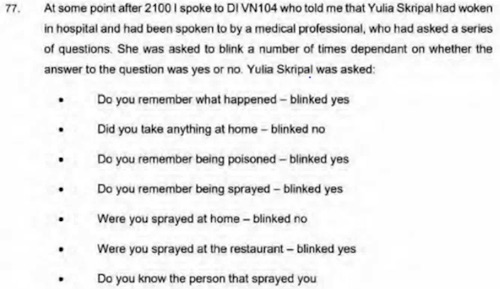
Hughes then interrupted to tell the witness to disregard what Skripal had communicated. “If the record that you were given there is right, someone suggested to her ‘Had you been sprayed’. She didn’t come up with it herself.” — page 73. Hughes continued to direct the forensics chief to disregard the hearsay of Skripal. “Anyway the suggestion that she had been sprayed in the restaurant didn’t fit with your investigations? A. [Asman] No, sir. LORD HUGHES: Thank you.” So far in in the Inquiry which began public sessions on October 14, this is the first direct sign of suppression of evidence by Hughes. Hearsay, he indicates, should be disregarded if it comes from the target of attack, Yulia Skripal. However, hearsay from British Government officials, policemen, and chemical warfare agents at Porton Down must be accepted instead. Hughes has also banned Yulia and Sergei Skripal from testifying at the Inquiry. The lawyer appointed and paid by the Government to represent the Skripals in the inquiry hearings said nothing to acknowledge the new disclosure nor to challenge Hughes’s efforts to suppress it.

“Climate change could be roaring but the naked eye can’t see it.”
• Climate-Change Debate ‘Heats Up’ With Collum, Keen, Fleckenstein (ZH)
Steve Keen, while primarily an economist, is well-versed in the research and a firm believer in the danger climate change poses. Dave Collum, chemistry professor at Cornell, believes much of the science to be bogus. Legendary short-seller Bill Fleckenstein was kind enough to shepard them along. We hope you enjoy and that you give both Keen and Collum a fair shake: For those short on time, here were the highlights:
Poking holes in the ‘narrative’. Things heated up when Collum unleashed a flurry of charts documenting trends that run counter to what we hear from most climate alarmists: Today, we actually see fewer hurricanes, tornadoes, heat waves, and forest fires than decades past. Collum: “There’s no obvious change in the frequency of global hurricanes back to 1980… Back to 1990, it actually has a distinct downward trend… Here’s one that goes back to 1960. These are violent tornadoes. Again, downward trend.” “Climate change could be roaring but the naked eye can’t see it.”
“Potentially Suicidal”. Natural disasters aside, Keen brought his own charts showing the recent and rapid ascent of global temperature. If accurate, the rise in temperature in the last 150 years when viewed on an axis of millions of years is staggering. Keen: “That’s the real danger of climate change. We’ve built [civilization] in a stable period of the climate. We’re destroying that stability and thinking we can still have the social system we’ve designed… I just don’t think that’s true.”
Keen’s sources provided below: Judd, E. J., J. E. Tierney, D. J. Lunt, I. P. Montañez, B. T. Huber, S. L. Wing and P. J. Valdes (2024). “A 485-million-year history of Earth’s surface temperature.” Science 385(6715): eadk3705. https://www.science.org/doi/abs/10.1126/science.adk3705. Scotese, C. R., H. Song, B. J. W. Mills and D. G. Van Der Meer (2021). “Phanerozoic paleotemperatures: The earth’s changing climate during the last 540 million years.” Earth-Science Reviews 215: 103503. https://dx.doi.org/10.1016/j.earscirev.2021.103503
— ZeroHedge Debates (@zerohedgeDebate) November 15, 2024
Green New Deal? Assuming humanity put all its resources and minds together to avert the Earth’s heating… can it be done? Fleckenstein asked our distinguished guests whether they would support a “Green New Deal” (massive public spending effort to combat climate change): Collum: “My dad taught me this: Never ask the government to spend your money. They’ll do a terrible job.” “If we were serious about climate change… They should never put guys like John Kerry in charge as Climate Czar.” “Steve’s enthusiastic about intervening as scientists. But here’s the question I have is who is going to make these tough calls? Who has the right to sign off the informed consent to say we are going to cover the world with a blanket of particles to block the sun?” Keen argued that — while governments are inefficient — we do not have a choice. Keen: “I’ll go on record on saying that if we continue down the trends we’re doing right now… we’re going to destroy civilization before 2050.”




SpaceX
SpaceX President & COO Gwynne Shotwell on the company having $22B in government contracts:
"We earned that. We bid it, we were the lowest price, best bidder, we won and we execute. It's not a bad thing to serve the U.S. government with great capability and products."
(via Baron… pic.twitter.com/TYeKigZhXD
— Sawyer Merritt (@SawyerMerritt) November 15, 2024

Baron
Ron Baron: “I don't feel like I'm a Democrat anymore. I think that the Democratic Party has been taken over by unions — Musk was invited initially to the EV Summit and then disinvited because the UAW said I don't want Elon Musk in the White House.” pic.twitter.com/BxDli3ddez
— ALEX (@ajtourville) November 15, 2024
Ron Baron: “I don't understand how Elon Musk is able to do all this. Amazing what he does. I don't see how anyone can compete with him the way he works — He's also very well read and he remembers everything. He must have a photographic memory.” pic.twitter.com/Rt0cg0e7T2
— ALEX (@ajtourville) November 15, 2024
Rob Baron Says Elon Musk Will Bring the Efficiency of Tesla & SpaceX to the U.S. Government
“The government wanted to send people back and forth to the International Space Station…So they gave two contracts — one to Boeing for $4.3B and a year later to SpaceX for $2.1B. SpaceX… pic.twitter.com/TuRd2z25Jk
— Chief Nerd (@TheChiefNerd) November 15, 2024

Camelemon
https://twitter.com/i/status/1857448564957327748

Phare du Four
https://twitter.com/i/status/1857826443180315012

Coconut oil
How coconut oil is produced traditionally
pic.twitter.com/v137STTrox— Science girl (@gunsnrosesgirl3) November 16, 2024

Wolf
Imagine how terrifying the first guy in history looked walking up with one of these huge Wolves as a pet pic.twitter.com/y5OkUDcw0N
— Nature is Amazing
(@AMAZlNGNATURE) November 15, 2024

Doggy
https://twitter.com/i/status/1857433301658608128

Black hole
https://twitter.com/i/status/1857668215725285772


Support the Automatic Earth in wartime with Paypal, Bitcoin and Patreon.






